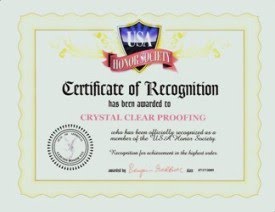Example: I would like to order a salad, a sandwich, and dessert.
Newspapers and magazines do not generally use this rule, as print space is too valuable to use on what might be considered extraneous punctuation. However, print publications will use the final comma before and if it is needed to avoid confusion.
Example: Her $10 million estate was split among her husband, daughter, son, and nephew.
Omitting the comma after son would have led the reader to believe that the son and nephew had to split one-third of the estate (each receiving one-sixth), rather than understanding that each relative received one-fourth of the estate.

Source: Grammarbook

































































Hello! Thanks for this - always very helpful to remember! Happy Wednesday! Take care
ReplyDeletex
I've got editors who delete the final comma as a matter of course, and others who go stick them back in. I'm all for clarity.
ReplyDeleteTerry
Terry's Place
Romance with a Twist--of Mystery
I was taught never to put a comma before the 'and'. Learning American grammatical rules has taken some time!
ReplyDeleteThis is American standard? We refer to it at work as the Oxford comma--I totally thought it was British norm, but not Americian. I LIKE it, so I generally use it unless I know not to...
ReplyDeleteMakes sense to me. I always use a comman before the 'and.'
ReplyDeleteThat's how I use commas.
ReplyDeleteIn my early days of editing, a comma preceding "and" was frowned upon; however, like so many grammar "rules," things change.
ReplyDeleteIMO, this rule modification was definitely needed. It eliminates a lot of misinterpretation, improves syntax, and makes every form of writing much easier to read.
~~~~~~~~~~~~~~~~~~~~~~~~~~
I want to thank everyone for your continued support of this blog by visiting when yours truly gets around to posting!
It's truly AWESOME to have a full docket of editing assignments, but I do miss my days of blog-hopping!